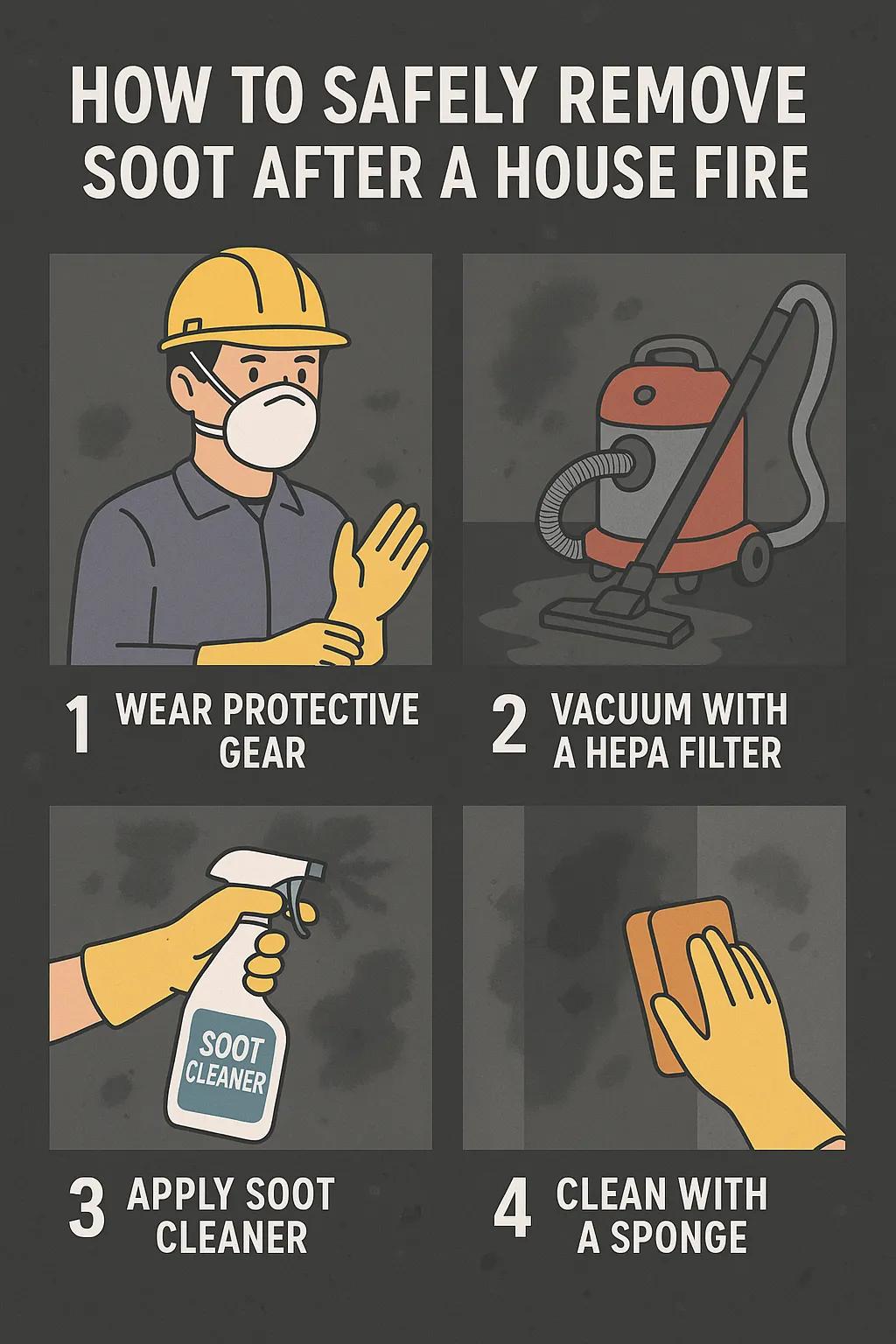Restoration Advice & Tips | Restoration 1 St. Louis Blog

How to Safely Remove Soot After a House Fire
Soot removal is a critical step in house fire cleanup, especially for residents in St. Louis, where fire damage can occur due to seasonal weather changes, heating systems, and aging infrastructure. Proper soot removal not only restores the home’s appearance but also ensures a safe and healthy living environment. Here’s a comprehensive guide to safely and effectively remove soot after a house fire.
1. Understand the Dangers of Soot
Soot is a byproduct of incomplete combustion and contains harmful chemicals and fine particles that can irritate the skin, eyes, and respiratory system. Prolonged exposure may lead to health issues, making prompt and proper cleanup essential.
2. Prioritize Safety First
Before starting the cleanup process, prioritize your safety:
Wear Protective Gear: Use gloves, goggles, and an N95 mask to prevent skin contact and inhalation.
Ventilate the Area: Open windows and use fans to improve air circulation and reduce airborne soot particles.
Turn Off HVAC Systems: Prevent soot from spreading through air ducts by turning off heating, ventilation, and air conditioning systems.
3. Assess the Damage
Evaluate the extent of soot damage to determine the appropriate cleaning methods:
Light Soot: Found on walls, ceilings, and furniture, usually removable with gentle cleaning.
Heavy Soot: Thick layers that may require specialized cleaning solutions and equipment.
Embedded Soot: Penetrates porous materials like drywall, insulation, and upholstery, often necessitating professional restoration services.
4. Gather Cleaning Supplies
Prepare the necessary cleaning materials:
Dry sponges (chemical sponges)
Mild detergent and warm water
Baking soda or white vinegar
Vacuum with HEPA filter
Soft-bristle brushes
Clean cloths and buckets
5. Begin the Cleaning Process
Vacuum Loose Soot: Use a vacuum with a HEPA filter to remove loose soot from surfaces, avoiding pressure that might embed soot further.
Use Dry Sponges: Gently wipe walls, ceilings, and hard surfaces with dry sponges designed for soot removal. Avoid water initially, as it can spread soot.
Apply Cleaning Solutions: For stubborn soot, mix mild detergent with warm water or use a solution of white vinegar and water. Test on a small area first.
Scrub Gently: Use soft-bristle brushes for delicate surfaces and scrub gently to avoid damage.
Rinse and Dry: Wipe cleaned areas with a damp cloth, then dry thoroughly to prevent moisture damage and mold growth.
6. Cleaning Specific Items
Walls and Ceilings: Start from the top and work downward to prevent streaks. Use dry sponges before applying cleaning solutions.
Furniture and Upholstery: Vacuum with a brush attachment, then clean with upholstery-safe products. Professional cleaning may be needed for severe damage.
Carpets and Rugs: Vacuum thoroughly and use carpet cleaners designed for fire damage. Professional steam cleaning is recommended for heavy soot.
Personal Items: Wash clothes and linens with heavy-duty detergent. Clean electronics with a dry cloth and consult professionals for internal soot removal.
7. Address Lingering Odors
Soot often leaves behind persistent odors. To neutralize smells:
Use baking soda to absorb odors by sprinkling it on carpets and fabrics, then vacuuming after several hours.
Place bowls of white vinegar or activated charcoal around the home to absorb odors.
Consider using air purifiers with HEPA filters to remove airborne particles.
8. When to Call Professionals
For extensive fire damage or if soot has deeply penetrated walls and ceilings, contact a professional fire damage restoration service in St. Louis. Experts have advanced equipment, such as ozone generators and thermal foggers, to eliminate soot and odors effectively.
9. Prevent Future Fire Damage
Take proactive steps to reduce the risk of future fires:
Install and maintain smoke alarms throughout the home.
Use heating equipment safely and follow electrical safety guidelines.
Store flammable materials properly and avoid open flames near combustible items.
10. Document the Cleanup Process for Insurance
If filing an insurance claim, document the soot damage and cleanup process:
Take photos and videos of affected areas before and after cleaning.
Keep receipts for cleaning supplies and professional services.
Maintain a detailed record of cleanup activities and time spent.
Conclusion
Safely removing soot after a house fire is essential to restore your home and protect your family’s health. By following these steps and seeking professional help when needed, St. Louis homeowners can effectively clean their homes, eliminate harmful residues, and prevent long-term damage. Prioritizing safety, using the right tools, and addressing odors ensures a thorough cleanup that allows you to return to a clean, healthy living environment.
